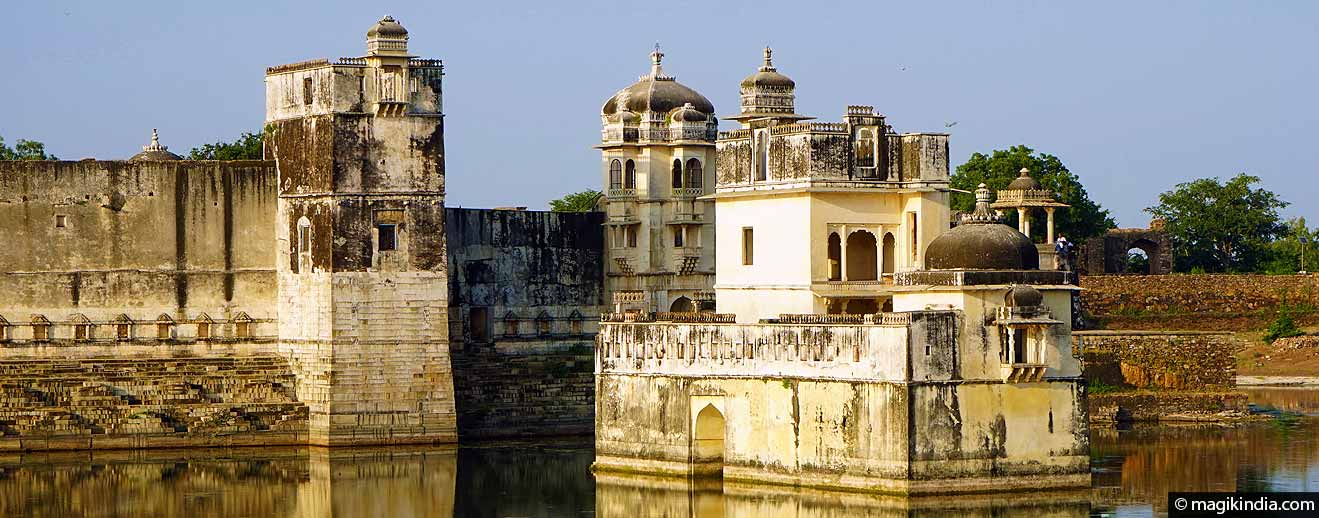
Chittorgarh, city of courage and devotion
The story of Chittorgarh (or Chittor) fort is steeped in heroism and the pride of the Rajputs. It stands as a symbol of courage and sacrifice. This “city of strength and devotion” as it is sometimes called fits that description well : Chittor has known many battles but the echo of the poetess Meerabai’s songs of divine love can still be heard.
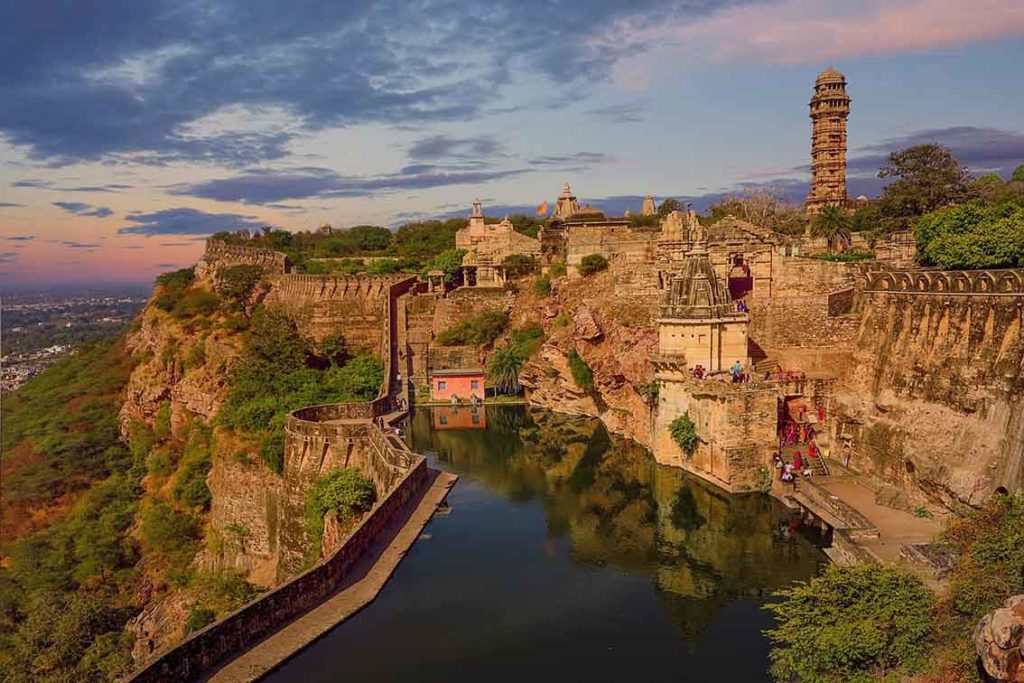
A UNESCO World Heritage Site, This 3ha fortified city, rising to 180m, was constructed by the Mauryans in the 7th century AD and was then the possession of a Rajput clan, the Guhilas.
Three major battles took place here, and each time the inhabitants chose to sacrifice themselves rather than fall into the hands of the enemy. The women and children threw themselves into sacrificial fires (jauhar) while the men faced the enemy clad only in simple robes.
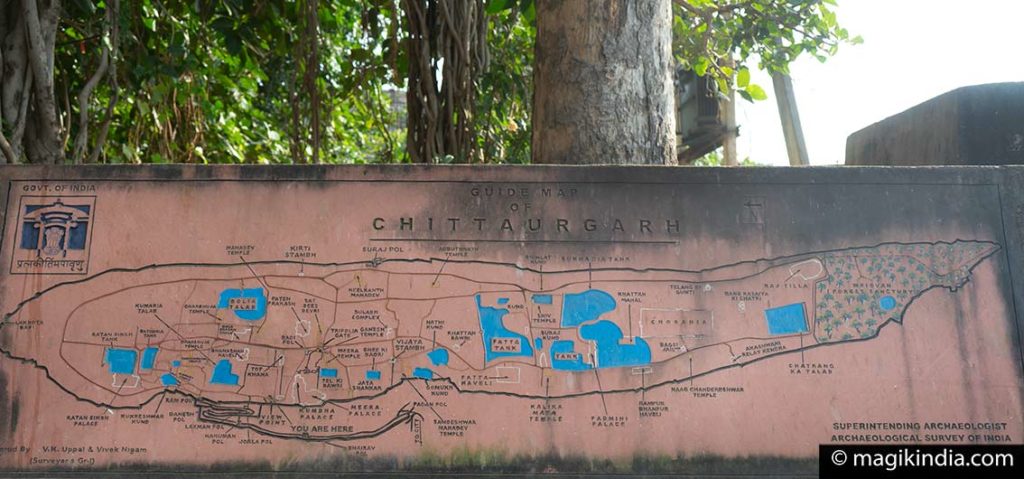
After the last battle, in 1568 against the Mughal emperor Akbar, the capital was moved to Udaipur and Chittorgarh lost its political importance.
In a more romantic vein, Chittor is also associated with the Hindu poetess Meerabai, famous for her songs and poems of devotion to Lord Krishna. There is a temple dedicated to her.
And now, let’s visit Chittorgarh !
Rana Kumbha Palace
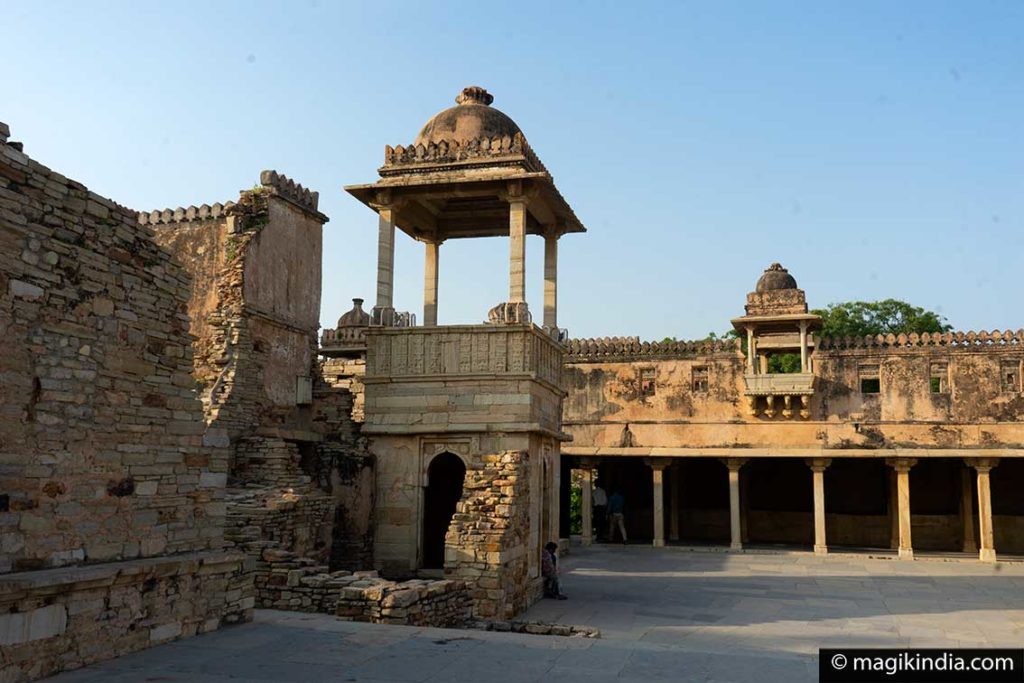
Rana Kumbha’s palace is generally the first building of the fort to be visited. Largely in ruins, this 15th century palace retains great historical importance.
It was the palace of the Rajput Rana Kumbha, one of the most famous sovereigns of the kingdom of Mewar from 1433 to 1468 CE. He extended the borders of Mewar to present-day Madhya Pradesh and he is also credited with building 32 forts, including that of Kumbalgarh, which has the second largest wall in the world after China.
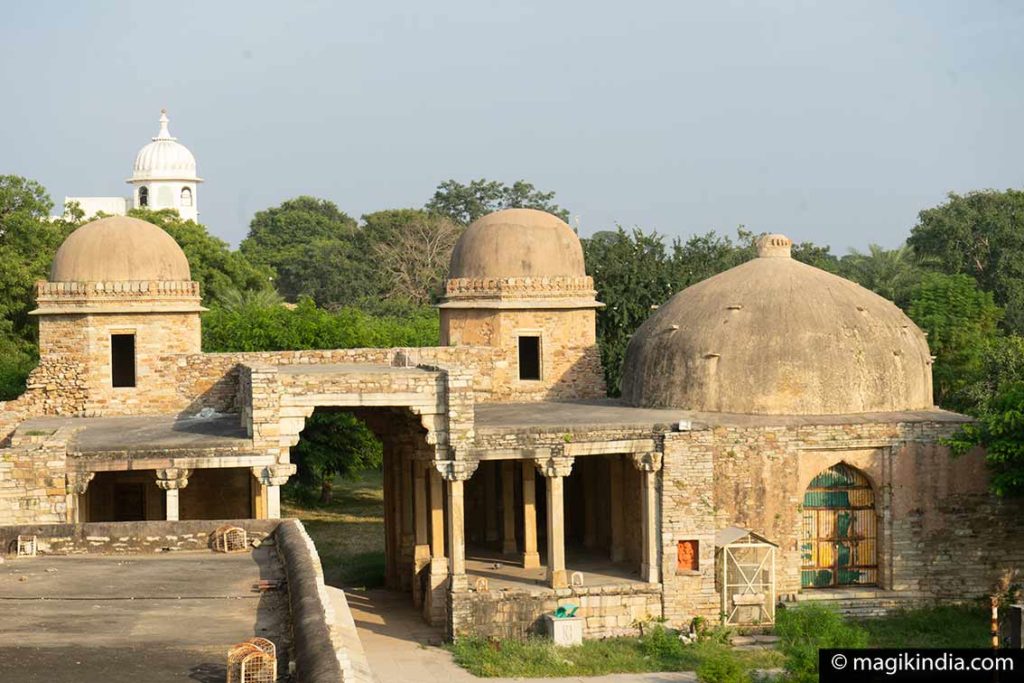
In 1522, the palace witnessed the birth of another important figure from Rajasthan, the Maharana Udai Singh II, who founded the city of Udaipur when Akbar seized Chittorgarh on February 25, 1568, after a long siege.
In the darkest history of the palace, it will be remembered that it is here, in underground cellars, that the Maharani Padmini and his court did Jauhar, to avoid being dishonoured by the Sultan of Delhi and his troops (see full story below).
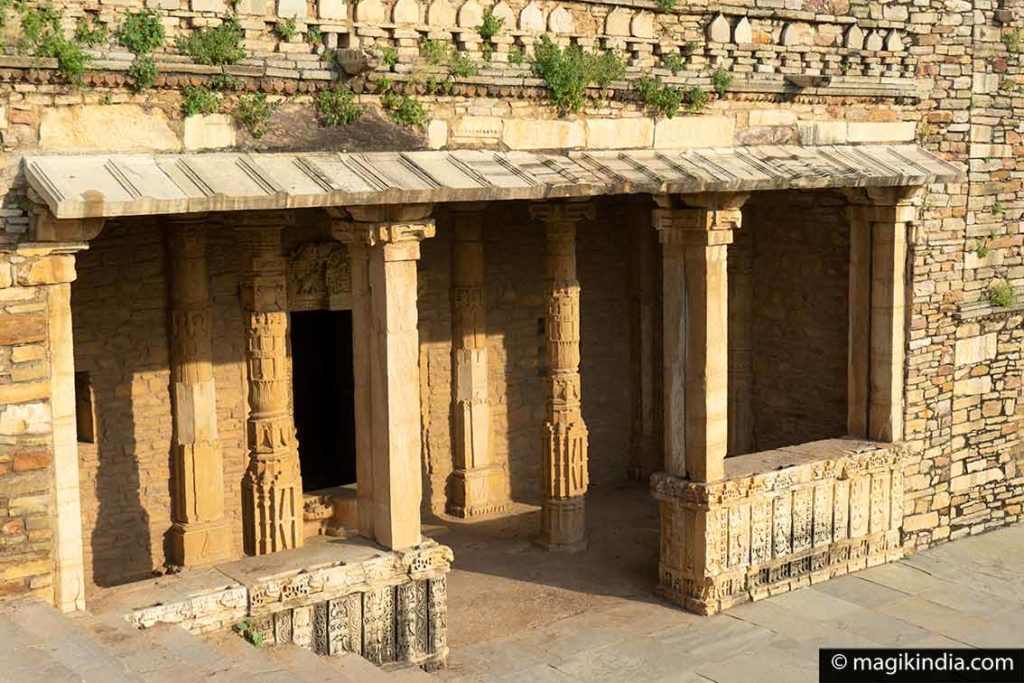
Vijay Stambh, the victory tower of Chittorgarh
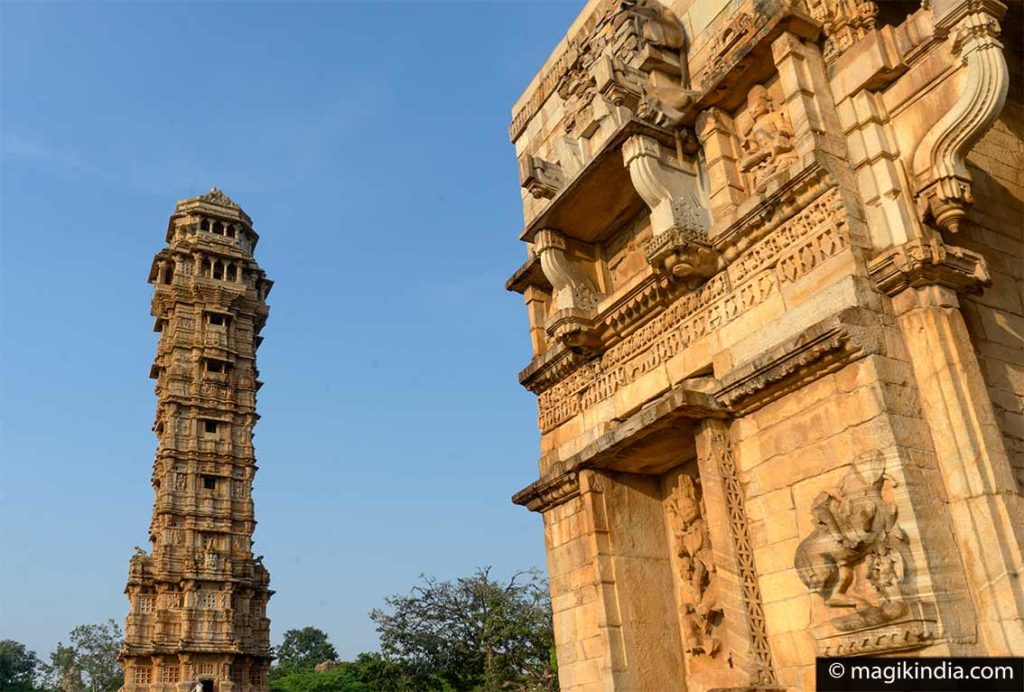
Not far from the palace is the Vijay Stambha, a nine-story ‘victory tower’ built by Maharana Kumbha to commemorate his victory over the Muslim rulers of Malwa and Gujarat in 1440.
The 37-meter building is carved with different Hindu and jain deities. Braver visitors can climb to the top.
Samadhisvara temple
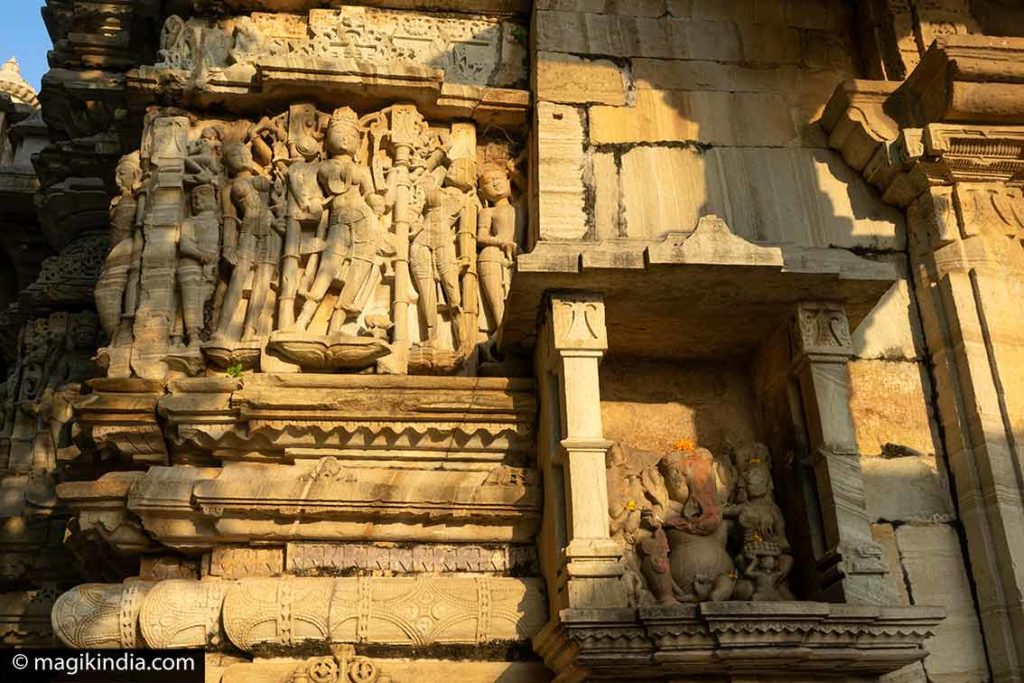
Next to the Vijay Stambh is the Samadhisvara temple, dedicated to Lord Shiva. It was built by Bhoja Paramara in the 11th century.
There are some fine carvings on the outside but the most astonishing element is the altar with its huge three-headed Shiva idol wearing ‘jata-mukutas’ or dreadlock crowns in the style of sadhus.
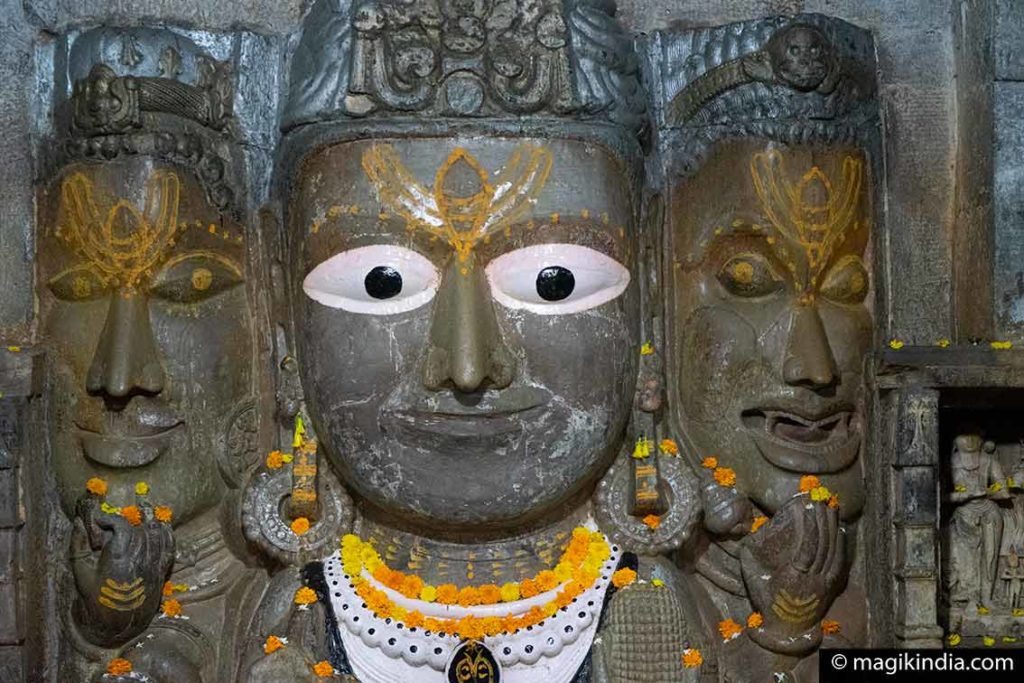
The head on the right presents the ‘aghora’ aspect of shiva with a fierce expression, while the faces in the center and on the left display a peaceful one.
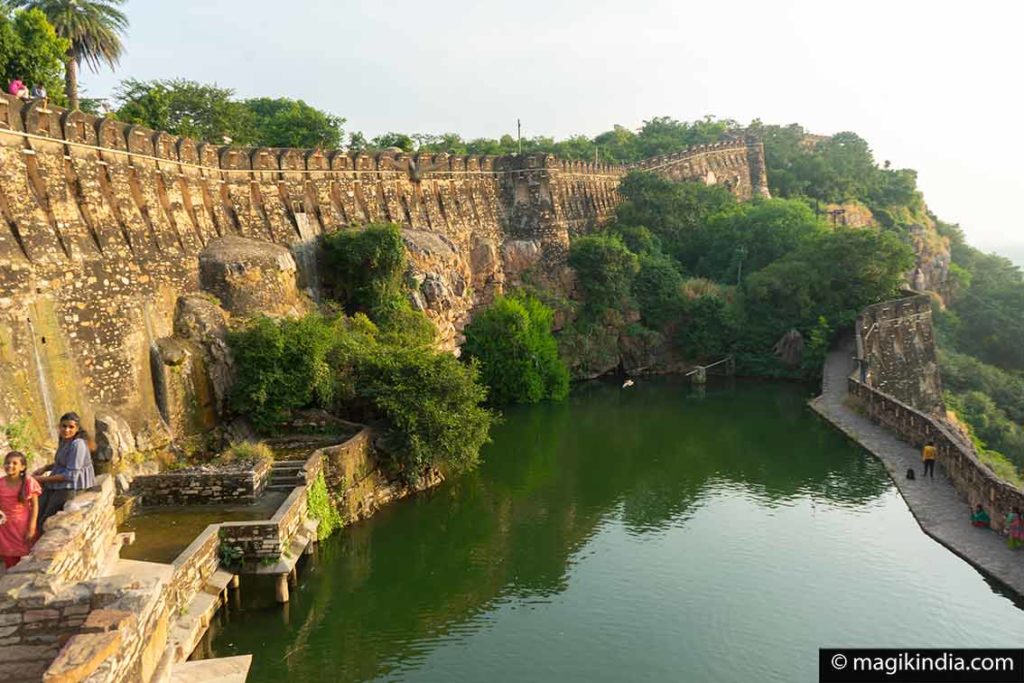
South of the Samadhisvara temple, a staircase leads to Gaumukh kund, a reservoir which has the shape of a cow’s head and whose water comes from a crack in the rock. The Rani Bindar tunnel near this reservoir leads to the underground chamber, where, according to legend, Rani Padmini did jauhar with the ladies of the court.
Padmini palace
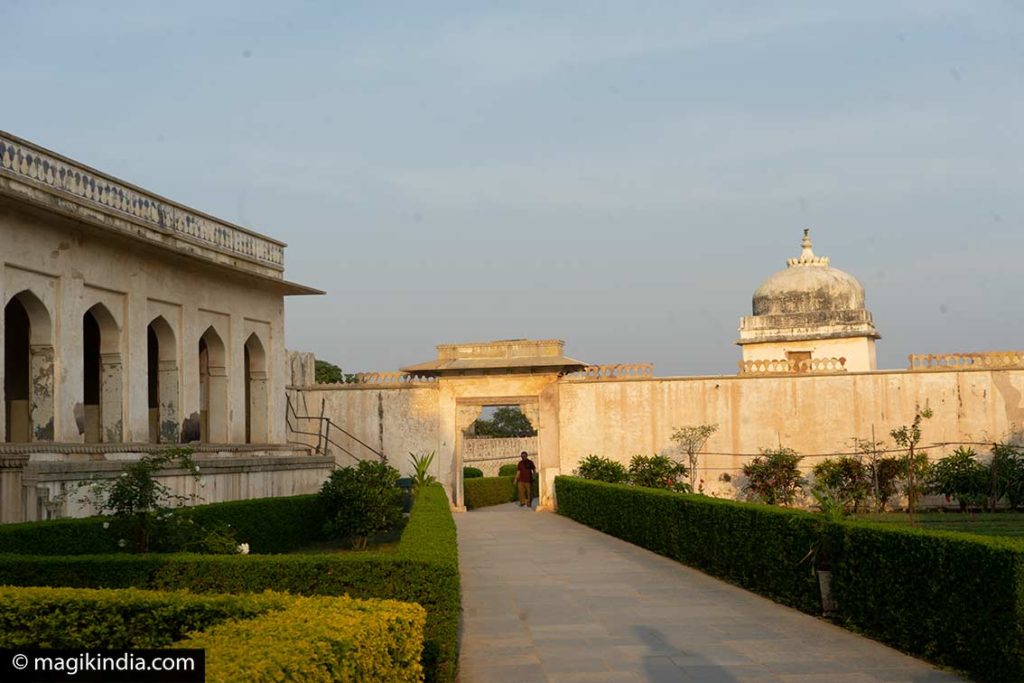
The Palace of Padmini is rather simple in appearance with several gardens, courtyards and pavilions in the Rajput and Persian style. It is best known for his legendary history linked to Queen Padmini. It is said that this is where Allah-ud-din Khilji, the Sultan of Delhi, fell in love with Padmini when he saw her in the reflection of a mirror (see story below). To recreate this moment, a mirror has been placed in the hall of the palace where the event would have occurred.
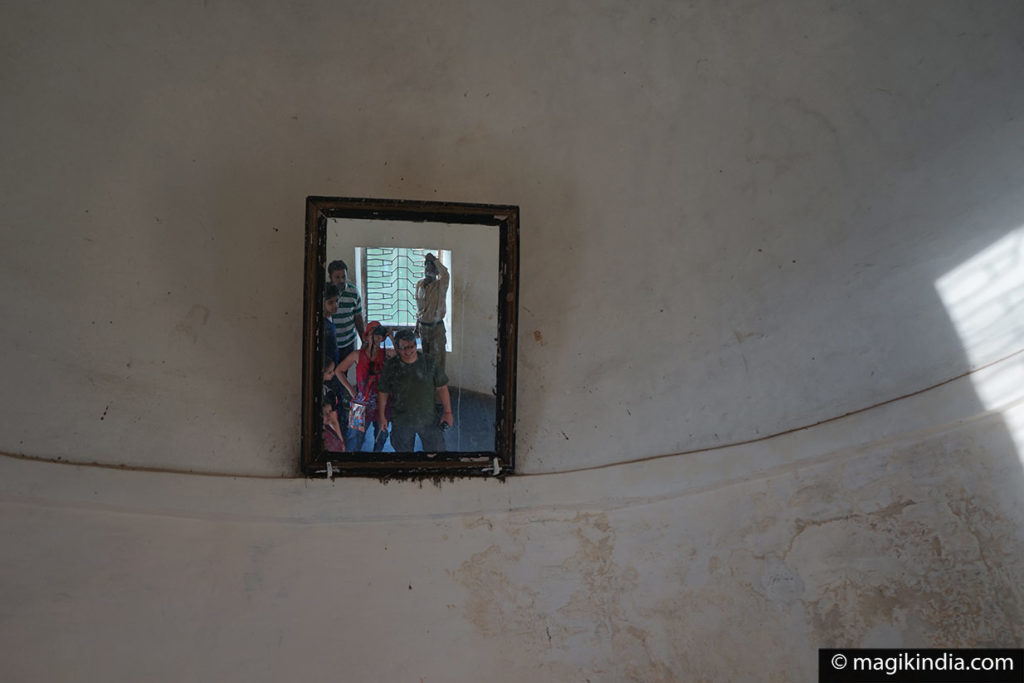
What catches the eye here is the ‘Jal Mahal’ (water palace) erected in the center of a pond surrounding the Palace of Padmini. This building, which from a distance resembles the castles of the Loire, is one of the very first examples in India of a palace surrounded by water.
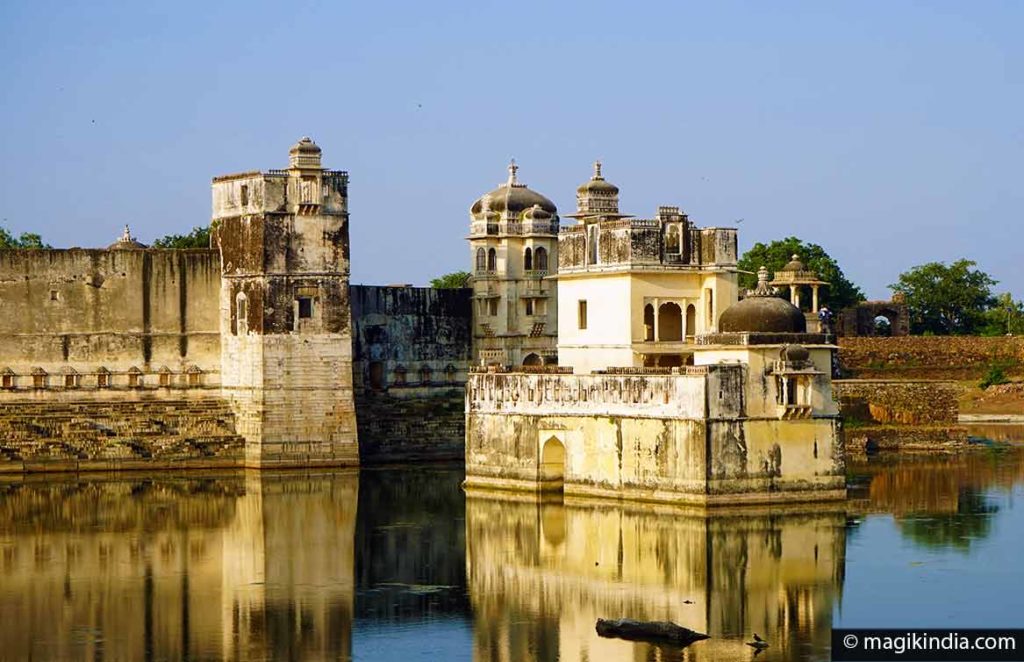
[Excerpt from the Bollywood film Padmavat, Ghoomar dance]
The legend of Padmini
The story of Queen Padmini was talked about again when the Bollywood film, Padmavat, retracing the story of this sovereign, angered the Rajput community, which pretended that this film did not respect the memory of this Queen ; it was even banned in several states of India!
It’s hard to understand why this fictional movie created such a stir when you know the story of Padmini remains very vague and that it mixes, as often in India, historical facts and legends.
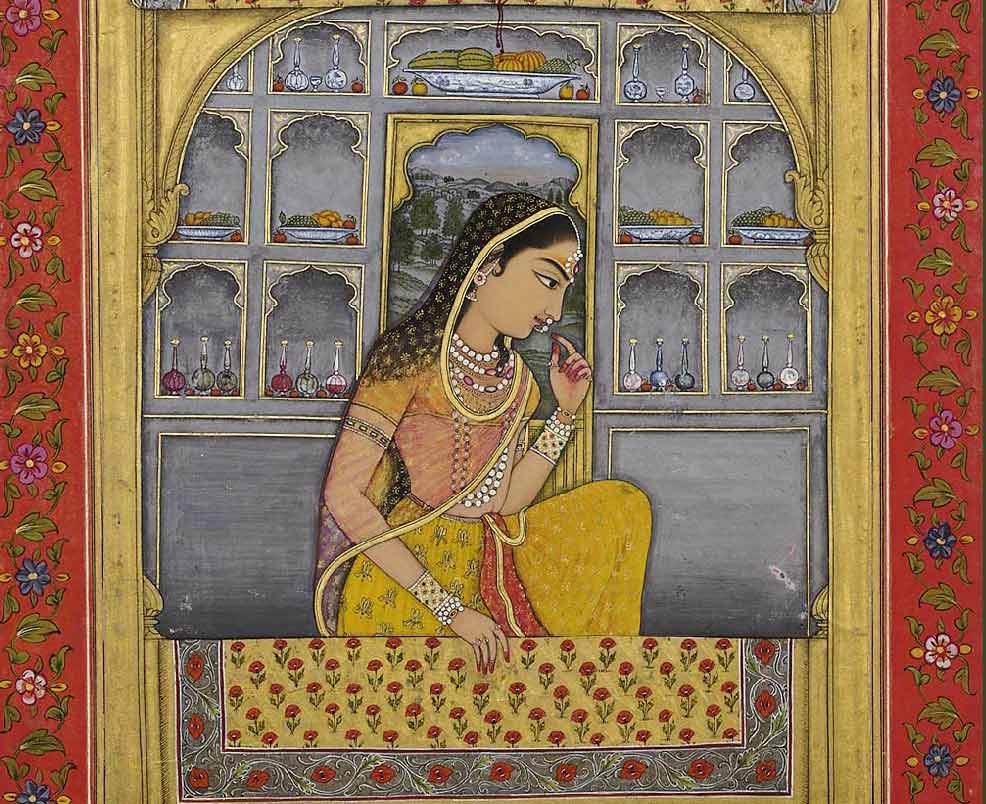
The legend has it that Allah-ud-din Khilji, the Sultan of Delhi, was mesmerised by the beauty of the queen of Chittor Padmini through a mirror and wanted Padmini for himself.
He kidnapped the king of Chittor and asked Padmini to come and surrender herself before Allah-ud-din Khilji, if she wanted her husband King Ratan alive again but Padmini didn’t surrender.
The Sultan was furious and ordered his army to storm Chittorgarh But hard as they tried the Sultans army could not break into the fort. Then Ala-ud-din decided to lay seige to the fort. The seige was a long drawn one and gradually supplied within the fort were depleted. Finally King Ratan gave orders that the Rajputs would open the gates and fight to finish with the besieging troops.
On hearing of this decision, Padmini decided that with their men-folk going into the unequal struggle with the Sultan’s army in which they were sure to perish, the women of Chittorgarh had either to commit suicides or face dishonour at the hands of the victorious enemy. Padmini made the choice of suicide through Jauhar.
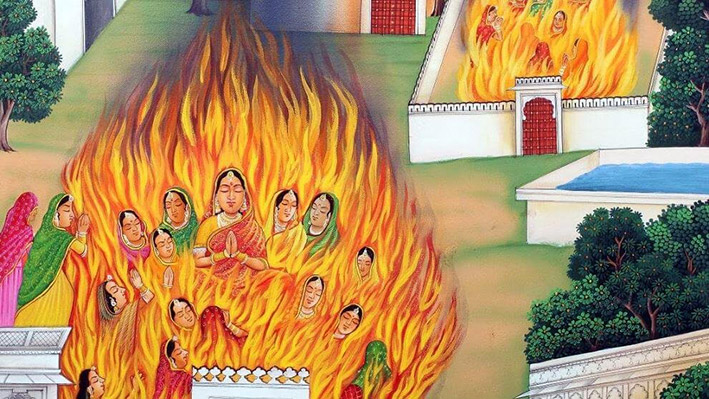
Mirabaï et Kumbha Shyam temples
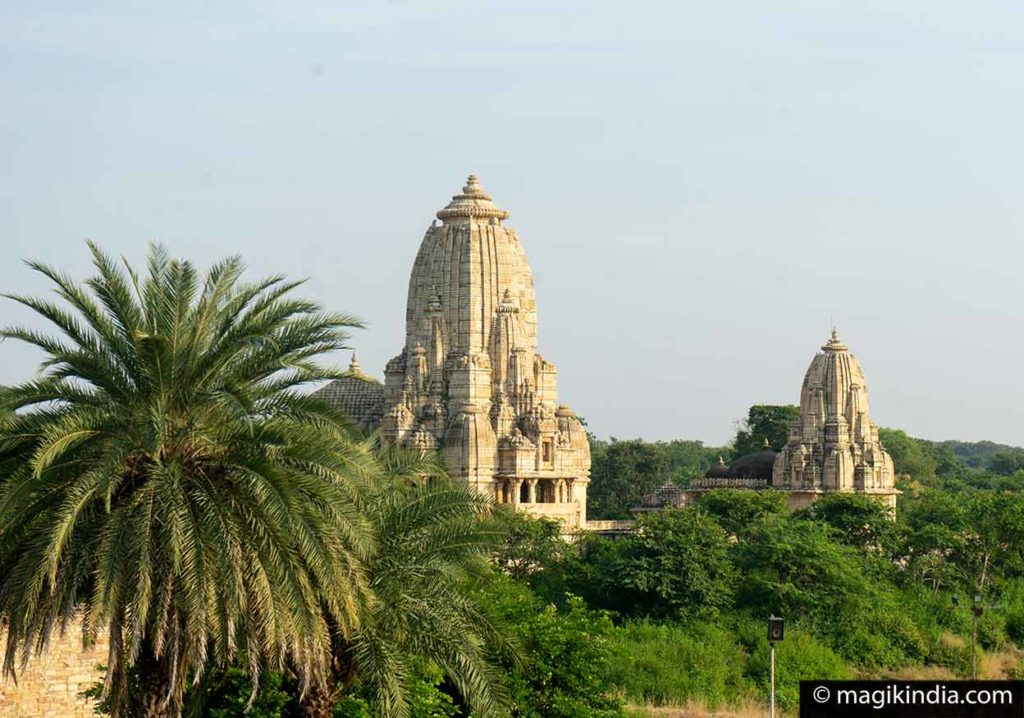
Located a few hundred meters from the Rana Kumbha Palace, the Kumbha Shyam temple, dedicated to Vishnu, is one of the most visited monuments in Chittorgarh. Built in the Nagara style by Rana Kumbha in 1448 CE, it has an imposing tower carved with Hindu deities. The image of the Garuda bird, Vishnu’s vehicle, stands under a pavilion opposite the temple.

The temple of Mirabai, located in the same complex, is dedicated as its name suggests to the holy poetess Mirabai who venerated more than all Lord Krishna. It is said that the ‘Bhakti’ (devotion) movement was born there.
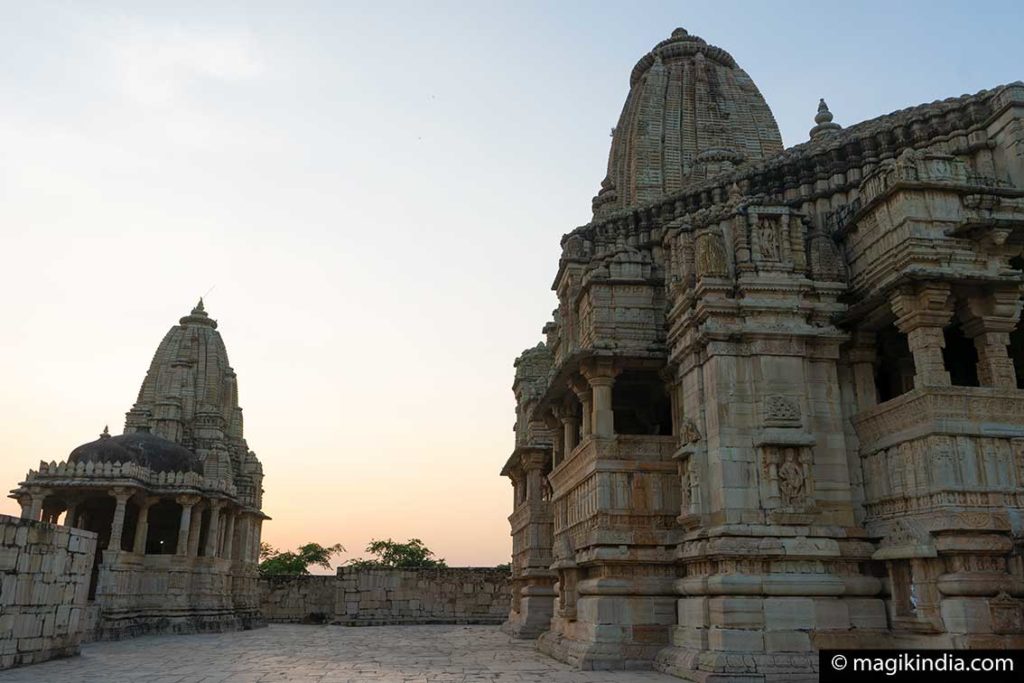
The poetess’ temple was also built during the reign of Maharana Rana Kumbha. The sanctum sanctorum of the temple includes a large statue of Lord Krishna, and at its feet, a representation of Mirabai, playing the tampura,
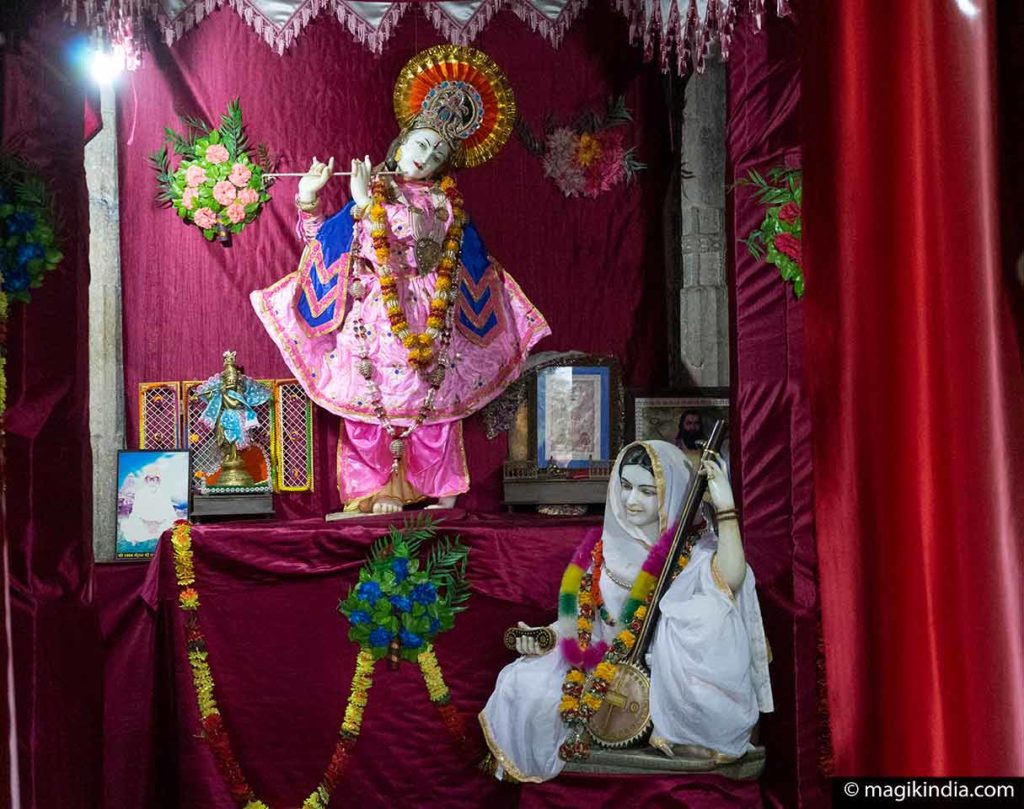
Born a princess, Mirabai Mirabai renounced the worldly life to devote herself to the worship of Lord Krishna. She composed renowned songs of devotion to him. Mirabaï lived the last years of his life in Dwarka in Gujarat. It is said that one day she entered the Dwarkadeesh temple and became spiritually united to Krishna. We never saw her again. Only his sari was found wrapped around the idol of Krishna.
Fateh Prakash Palace
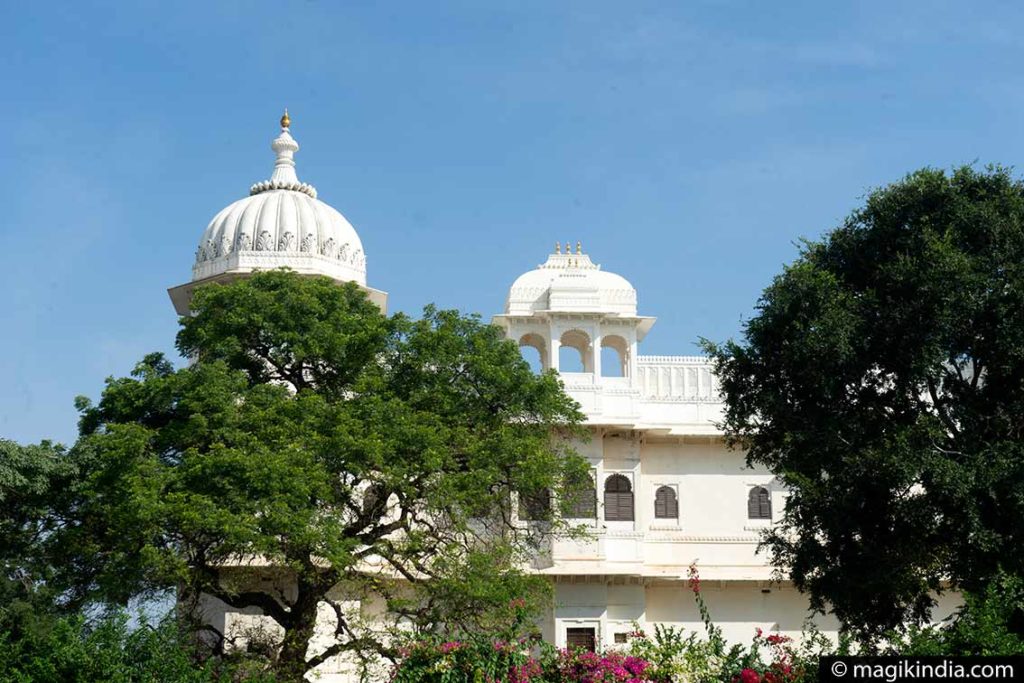
Just opposite the temples of Mirabai and Kumbha Shyam, stands the white palace of Fateh Prakash built in the 19th century during the reign of Maharana Fateh Singh to serve as his main residence. It displays a typically Rajput style, each of its four pieces being crowned with a dome. The interior is beautifully decorated with murals depicting legends from Rajasthan. In 1968, a large part of the Fateh Prakash palace was converted into a museum.
Jain Temple Sathis Deori

Located right next to Fateh Prakash Palace, the Jain Sathis Deori Temple is one of the wonders of Chittorgarh Fort. This massive 11th century temple was built by the svetambaras, one of the two main branches of Jainism along with the digambaras.
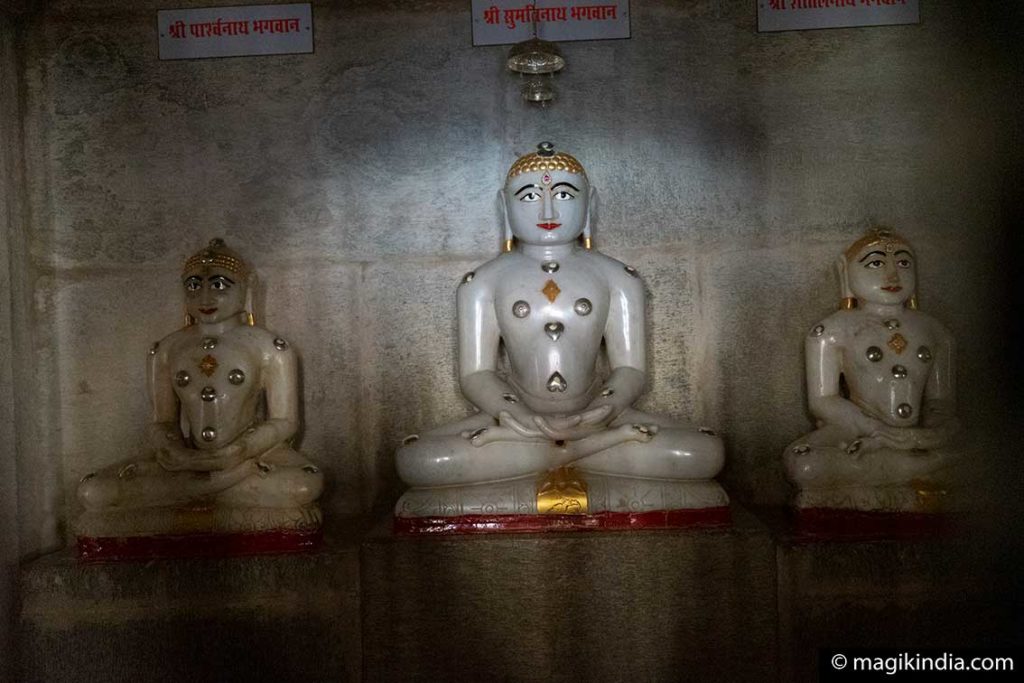
Svetambara means ‘dressed in white’ and refers to the practice of his ascetics who wear only white clothes, which distinguishes them from the Jains digambara whose males devotees do not wear any clothes.

The temple celebrates the life and virtues of Adinath, the first of the 24 Jain Saints, in the form of elaborate sculptures. The name of the temple ‘sathis’ (27 in Hindi) tells us that there were formerly twenty-seven temples at this place.
Kalika Mata hindu temple
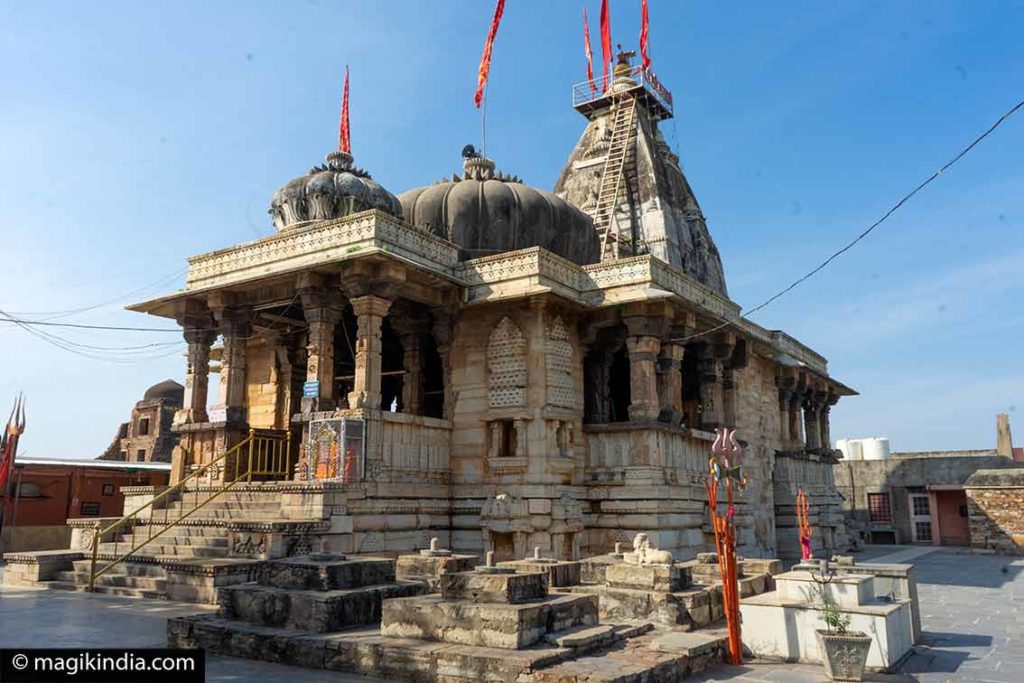
Continuing a little further down the road that runs alongside the fort, you come across the temple of Kalika Mata, a very popular 8th century sanctuary dedicated to the goddess Bhadrakali, one of the forms of the fierce goddess Kali.
The temple was originally dedicated to the Sun god (Surya). It suffered massive destruction at the hands of the army of the Sultan of Delhi in the early 14th century. At the end of the 14th century, Maharana Hamir Singh rebuilt the temple by establishing the idol of the goddess Kali there, as a symbol of protection and strength.
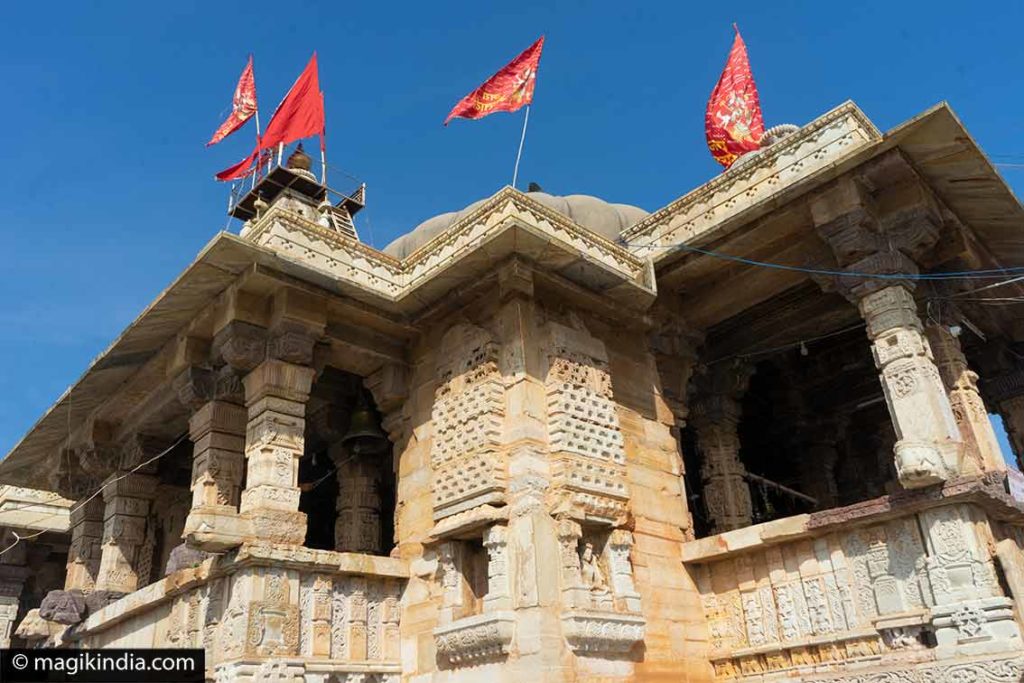
Kirti Stambh Jain Temple
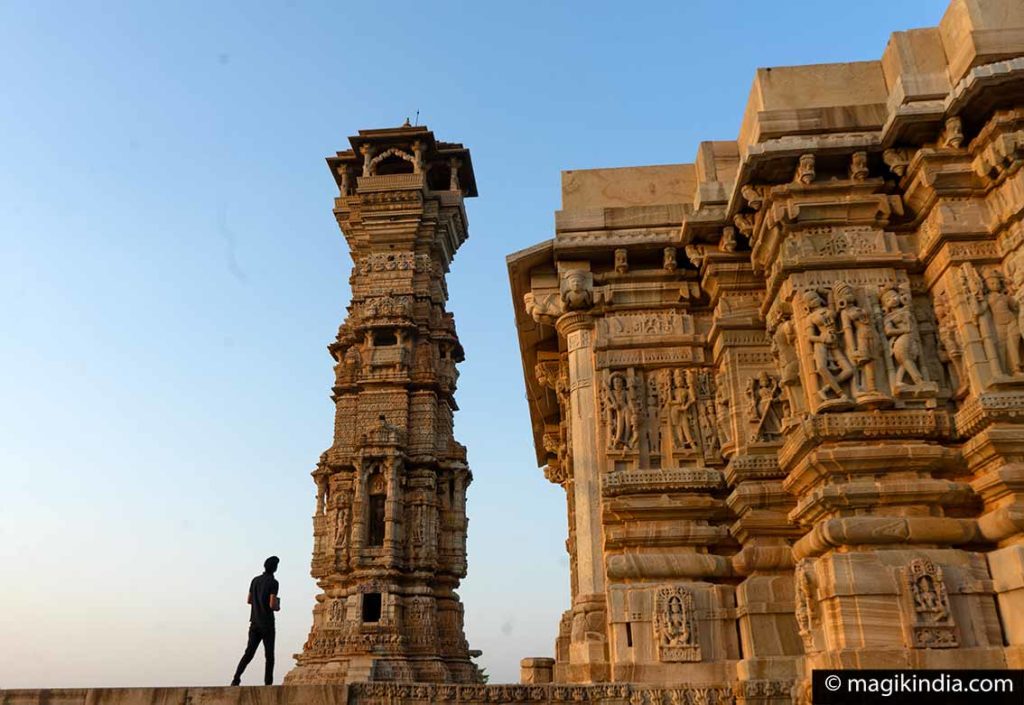
Located on the eastern ramparts of the fort, the Kirti Stambh temple is dedicated to Adinath, the 1st Tirthankar (Saint Jain). It belongs to the Jain branch of digambars.
To the right of the temple, the Kirti Stambh tower, which gave the temple its name, stands 22 meters high. Built by a wealthy Jain merchant in the 12th century to the glory of Jainism, it has seven floors carved into the four corners of Shri Adinath idols.
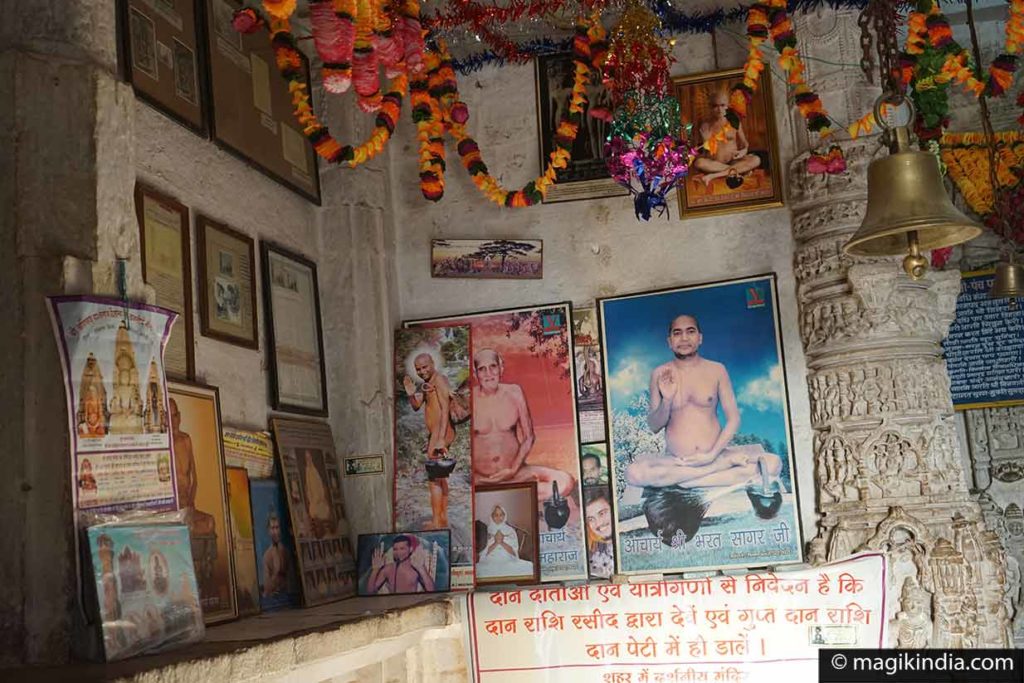

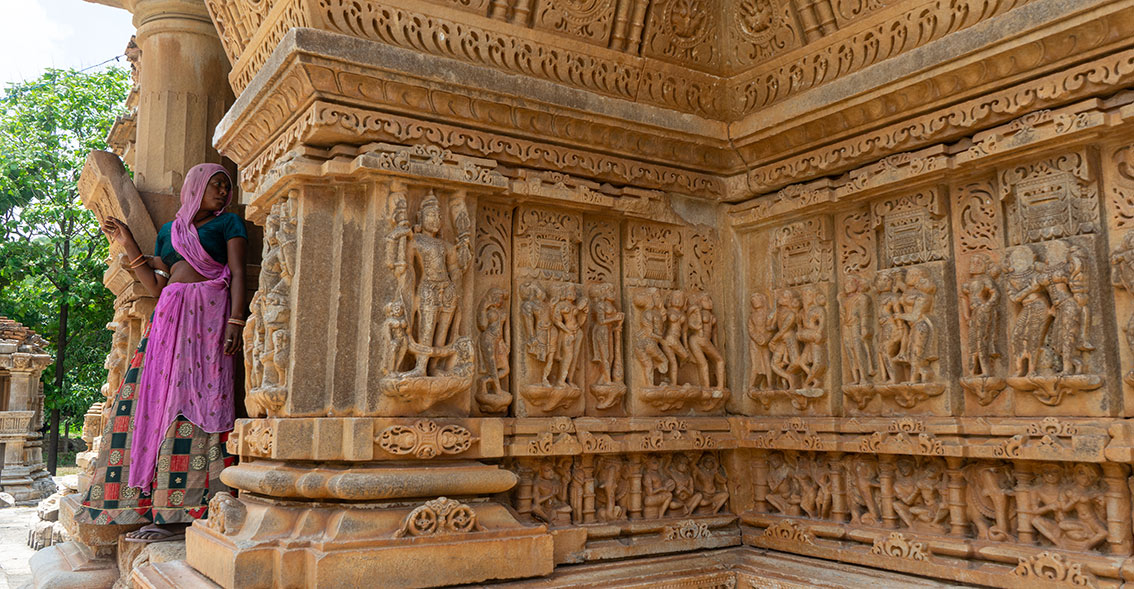

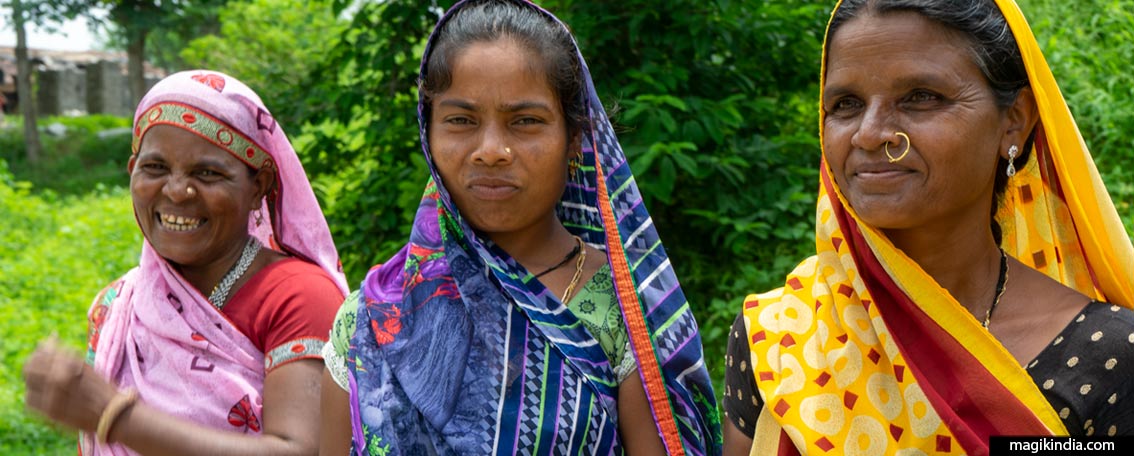

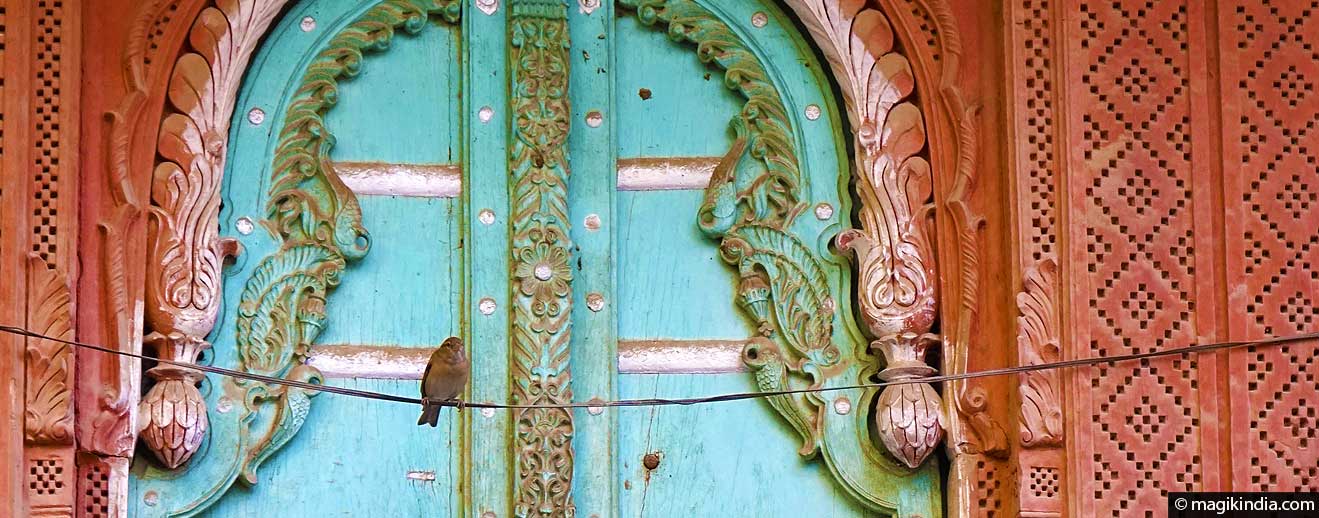
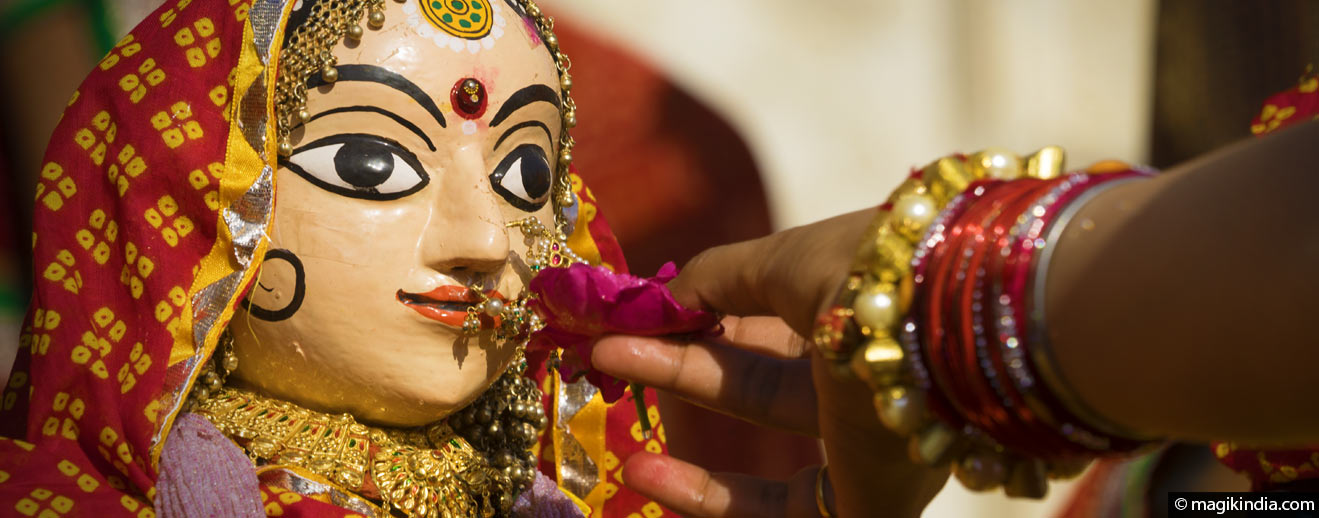
Such an amazing post on Chittorgarh Fort . I am from Rajasthan and this post added much information to my existing bucket of knowledge about heritage of Rajasthan. Great Work. Keep It Up.
Thanks Manu, I’ll have a look on your blog too. Take care, stay safe. Mathini 🙂